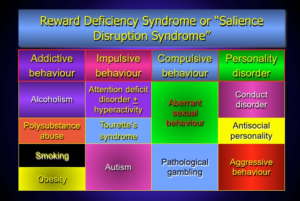The Neurochemistry of Female Sex Addiction
The Neurochemistry of Female Sex Addiction
 Sex addiction is a problem that many people are battling with in the US and the world over. However in the past it was thought that men were the main victims of sex addiction but research has since proved that this is a lie as women are more prone to this vice as opposed to women. Another factor that makes women more of victims is the fact that generally society has always associated women who are addicted to sex as sluts while men who are addicted to sex are often thought as studs. The reality of the matter however is, both genders are at a loss when addicted but what makes it easier for men to find help is the fact that they are free and can express their problems when addressed by their therapists and this openness helps them find help. On the other hand, women afraid of all the negative tittles they will be associated are often afraid to open up and let the problem be known and this will manifest in various behavioral changes.
Sex addiction is a problem that many people are battling with in the US and the world over. However in the past it was thought that men were the main victims of sex addiction but research has since proved that this is a lie as women are more prone to this vice as opposed to women. Another factor that makes women more of victims is the fact that generally society has always associated women who are addicted to sex as sluts while men who are addicted to sex are often thought as studs. The reality of the matter however is, both genders are at a loss when addicted but what makes it easier for men to find help is the fact that they are free and can express their problems when addressed by their therapists and this openness helps them find help. On the other hand, women afraid of all the negative tittles they will be associated are often afraid to open up and let the problem be known and this will manifest in various behavioral changes.
Orgasm and dopamine
Most people who engage in sex for recreational purposes are often in pursuit for the highest sexual climax otherwise known as orgasm. According Wilhelm Reich orgasm naturally helps in discharge of excess bio-energy with the additional liberation of feeling energy, and he also recognized the negative consequences of blocked sexual energies. However it’s quite unfortunate that in addition to exciting peaks, orgasms tend to produce powerful negative side-effects that are only now becoming better understood. This is due to predictable trends in hormonal activity which seem to be similar in all mammals to ensure certain evolutionary objectives, especially the wide mixing of gene pools and the safe raising of offspring. This is achieved with the following neurochemical changes.
As expected there are hormones that come to play; dopamine, the reward hormone; prolactin, the hormone of satiation; oxytocin, the cuddle hormone, and levels of androgen receptors, which all powerfully affect our mood, our desire for intimacy, our perception of our mate, as well as our susceptibility to addictive activities and substances. These hormones can also have different but generally related functions.
The levels of dopamine will abruptly fall and this will induce the usual withdrawal symptoms. The fall of dopamine is rather immediate in men while it takes time in women to occur. As the level of dopamine falls the level of prolactin will heighten and the androgen receptors fall after orgasm. Low testosterone in women is associated with irritability and anger. In sexually-satiated rats it has been shown that serotonin and endorphin levels also rise, and this also decreases dopamine and raises prolactin levels. Oxytocin levels fall after conventional orgasm but remaining in close contact may help to counter this drop and sustain oxytocin levels. It is the fall of dopamine to the lows that is associated with all the withdrawal effects and women, deprived of affection will engage in sex repeatedly to enjoy the magical bliss of dopamine heights during sex especially at orgasm. This is a ‘high’ that is often compared to the feeling those using drugs of pleasure often crave.
Apart from behavioral changes a female addict will suffer from disturbed hormone equilibrium that may last for a week or two, a period in which she will be battling these side effects; being more irritable, dissatisfied, and anxious or depressed. This is exactly the same process and length of time prolactin levels need to recover during withdrawal from cocaine.
Another stimulant that is involved in sex is the phenylethylamine (PEA). PEA is also present in cocoa and chocolate and elevates energy, mood and attention. PEA is produced in greater amounts when one is in love and when this stimulant is in low levels, a person will feel unhappy and deprived.
as mentioned in earlier article, most women get addicted to sex while in pursuit of love and affection, When a woman first fall in love she becomes bonded by rising PEA, oxytocin and dopamine levels .When she is are sexually aroused by close contact her dopamine level rises further and at the time of orgasm she will have a dopamine brainstorm which one researchers have compared to the effects of heroin on the brain. Dopamine is active in all addictions, even in people who have forgotten what sex is. Most of this activity is in the limbic system, the oldest part of the brain.
What causes addiction in women?
 The honest truth is that what causes sex addiction women is until now poorly understood but researchers have pointed fingers at childhood neglect or abuse, such as physical or emotional abandonment or other forms of trauma. Most of females who are sex addicts are reported to have experienced sex abuse as children. Early child abuse of nearly any kind can impair a child’s ability to bond in healthy ways as an adult, leading to chronic relationship intimacy issues that can eventually morph into sexual addiction.
The honest truth is that what causes sex addiction women is until now poorly understood but researchers have pointed fingers at childhood neglect or abuse, such as physical or emotional abandonment or other forms of trauma. Most of females who are sex addicts are reported to have experienced sex abuse as children. Early child abuse of nearly any kind can impair a child’s ability to bond in healthy ways as an adult, leading to chronic relationship intimacy issues that can eventually morph into sexual addiction.
Research suggests that there’s also a strong neurochemical component to both eating disorders and sexual addiction. One can become addicted to the potent neurochemical rush that occurs during an exciting sexual or romantic encounter. This neurobiological blend includes highly satisfying dopamine as well as adrenaline, oxytocin, serotonin and endorphins. Women suffering from emotional or psychological issues such as depression or anxiety and from childhood trauma or profound trauma as an adult can unconsciously use this neurochemical response to cope with stress and painful emotions. Compulsively reliving or re-enacting the pleasurable fantasies and experiences sets up an addictive cycle of using sex and sexual fantasies to control intensely painful emotions.
Finally, sex addiction is not a light matter. It’s a problem that is still holding many women captives .This problem needs to be treated effectively through integrative medicine. Dr. Dalal Akoury (MD) is an expert at this. Call her on (843) 213-1480 for help.
The Neurochemistry of Female Sex Addiction








 Addiction is a serious problem that should be addressed amicably to avail the best of solutions to those affected. As it stands people get addicted to different things and while some kinds of addictions are more common like
Addiction is a serious problem that should be addressed amicably to avail the best of solutions to those affected. As it stands people get addicted to different things and while some kinds of addictions are more common like  Some of the sex addictions that have been specifically used for women include;
Some of the sex addictions that have been specifically used for women include;























